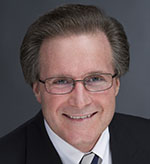In Part 2, 3 and 4 of this series, we discussed the first three practices that are fairly universal in the quest to breathe new life into established churches: 1) Keeping the mission, maturation, and ministry of the Church at the forefront in decision-making 2) Pursuing unity in the context of progress, not in the place of progress and 3) Blessing the past and affirming living traditions, but challenging complacency and “happy talk.” The fourth and final practice I would recommend is to:
Consult good resources for benchmarks on church effectiveness.
Let’s say a church has let go of the happiness trap (first point), healthfully integrated unity and mission (second point above), and honored their past without limiting their future (third point above).
This still leaves the questions such as:
- What are the best strategies for helping established churches become more missionally effective?
- What are the best ways to reach the unchurched?
- What are the best practices in helping people mature as disciples?
Fortunately, there are good resources to provide benchmarks on these issues. In fact, the market is flooded with books on church leadership. Ministers usually are aware, but elders are often surprised when exposed to the abundance of materials.
These resources are valuable because they provide an objective perspective on church development that goes beyond a leader’s limited exposure to what has worked in other environments. It is so easy to project personal agenda into church strategy, arguing, “If we do ____, it will help us ___” (you fill in the blanks). The basis for this may be nothing more than intuition or preference.
To help church leaders find these materials, my website, LifeandLeadership.com, summarizes and/or categorizes over 1,500 resources and provides over 100 Ministry Resource Guides on topics of interest. Below I have highlighted four subjects to illustrate the value of good research in choosing strategies that bring the greatest return.
First, on the subject of reaching the unchurched: Fortunately, there are many well-researched pieces, and I have listed several on my website in the section entitled “Research on Effective Churches.” For example, see Thom Rainer’s work, Surprising Insights from the Unchurched and Proven Ways to Reach Them. He researched more than 2,000 effective evangelistic churches and interviewed hundreds of formerly unchurched. His findings include a list of the 13 items that drew the unchurched to their congregations.
Interestingly, 90% of them were attracted to a preacher with sound convictions, and 88% to preaching deep biblical truth. Also, only 11% said worship style was important to their church choice. While this does not excuse churches from addressing worship style, it does help us rethink our controversies over style as more of an internal issue of faith development and unity more than an evangelistic enterprise. A church is probably smart to address worship style for their existing members, but Rainer’s research helps guard against pushing for these changes as a necessary prequel to an evangelistic congregational environment. Also, 88% of the unchurched wanted in-depth doctrinal preaching. This dispels the common myth that on Sunday mornings, when more visitors are present, the preacher should go lighter and more “practical.” In reality, the unchurched prefer meaty, theologically-informed presentations. Could it be that the “practical” mandate comes from the consumer-driven expectations of our own members? It is something to consider.
Second, on the quest to “grow a church”: This often leads to a preoccupation with bodies, buildings, and budgets. I argue it is more important for people to be deeply transformed and missionally engaged. See the research by Ed Stetzer and Thom Rainer, Transformational Church: Creating a New Scorecard for Congregations. It results from a study of more than 7,000 churches, hundreds of ministers, and 15,000 church member surveys. They discovered a “transformational loop” practiced by churches that effectively lead people into deep life transformation and missional stewardship. The authors’ emphasis on discipleship is also conveyed by other authors such as Mike Breen and Steve Cockram, who say,
“If you make disciples, you always get the church. But if you make a church, you rarely get disciples…It is far more likely that you will create consumers who depend on the spiritual services that religious professionals provide..”[1]
Third, on the spiritual formation of congregations: If you have ever been frustrated with books on spiritual formation, not because you dislike the emphasis, but because of the almost universal tendency of authors of this stripe to give little practical help in guiding whole congregations (sometimes even implying that strategic church development is “unspiritual”), then look at N. Graham Standish, Becoming A Blessed Church: Forming a Church of Purpose, Presence, and Power. Standish strikes an excellent balance between the extremes of “rational functionalism” (his word) and “anti-strategic spiritualism” (my word). His approach is deeply spiritual and immensely practical. A welcome combination! He argues against the mechanistic dependence on principles, strategies, and skills. He describes it as “logic over emotion, and form and function over spiritual vibrancy.” This lends itself to a secular focus on what we want and what we can accomplish.
Certainly the methods are valuable, but the blessed church is one whose relationship with God is so rich and meaningful that his blessings flow through it. Throughout the book, he discusses the spiritual groundings and practical strategies to help churches experience this blessedness.
Fourth, on the ever popular subject of mission, vision, and values: Given the practices of today’s businesses and industries to define “corporate core content” of vision, mission, and values, it is understandable why many elders believe the best way to move the church forward is to clarify these for their congregations. While I have some doubts that this is best strategy for established churches (that’s another chapter or book), it can be helpful. If it is done in churches, however, it must be done differently. That is why I have been impressed with Will Mancini, Church Unique: How Missional Leaders Cast Vision, Capture Culture, and Create Movement.
Mancini helps church leaders understand, articulate, and mobilize members toward the unique vision of their congregations. He discusses 10 (of many more) sources of uniqueness for a church. He laments that churches often neglect finding their uniqueness by “adopting programs and mind sets that worked elsewhere.” This neglect results from leaders falling into one or more of six different “think holes” where “vibrant thinking gets sucked beneath the surface to suffocate and disappear from view.” How does one get out of these think holes? Strategic planning? No. Mancini discusses three major weaknesses of this approach that actually obscure vision. Church growth? Not necessarily. Church growth tends toward duplication of models that worked elsewhere, thus “caging the kingdom” by forcing all churches into a few set models that rob local congregations and their communities from the distinctive impacts for which God has designed them.
He also suggests four other “soul fast foods” which church members gravitate to when they experience the vision vacuum. Like fast food, these tangible manifestations of church “success” (e.g., capital campaigns, church buildings) give people the “feeling” of being healthy and nourished, but in reality are unhealthy substitutes for vision. Mancini steps into this vacuum by providing a process for clarifying, articulating, and advancing a church’s unique vision.
These are just four cases where good resources may benchmark best practices. For more help, go to my website, www.lifeandleadership.com.
Conclusion
Breathing new life into established churches is the hardest work you will ever love. For those who are committed to seeing it through, the four perspectives I have mentioned are usually foundational. All of you who labor diligently as elders, ministers, and other leaders in these contexts, I affirm and admire you. Carry on!
Part 1 | Part 2 | Part 3 | Part 4 | Part 5
[1] Mike Breen and Steve Cockram, Building a Discipling Culture, 3 Dimension Ministries, 2011: Kindle Electronic Edition: Chapter 1, location 97.

 by
by
Leave a Reply